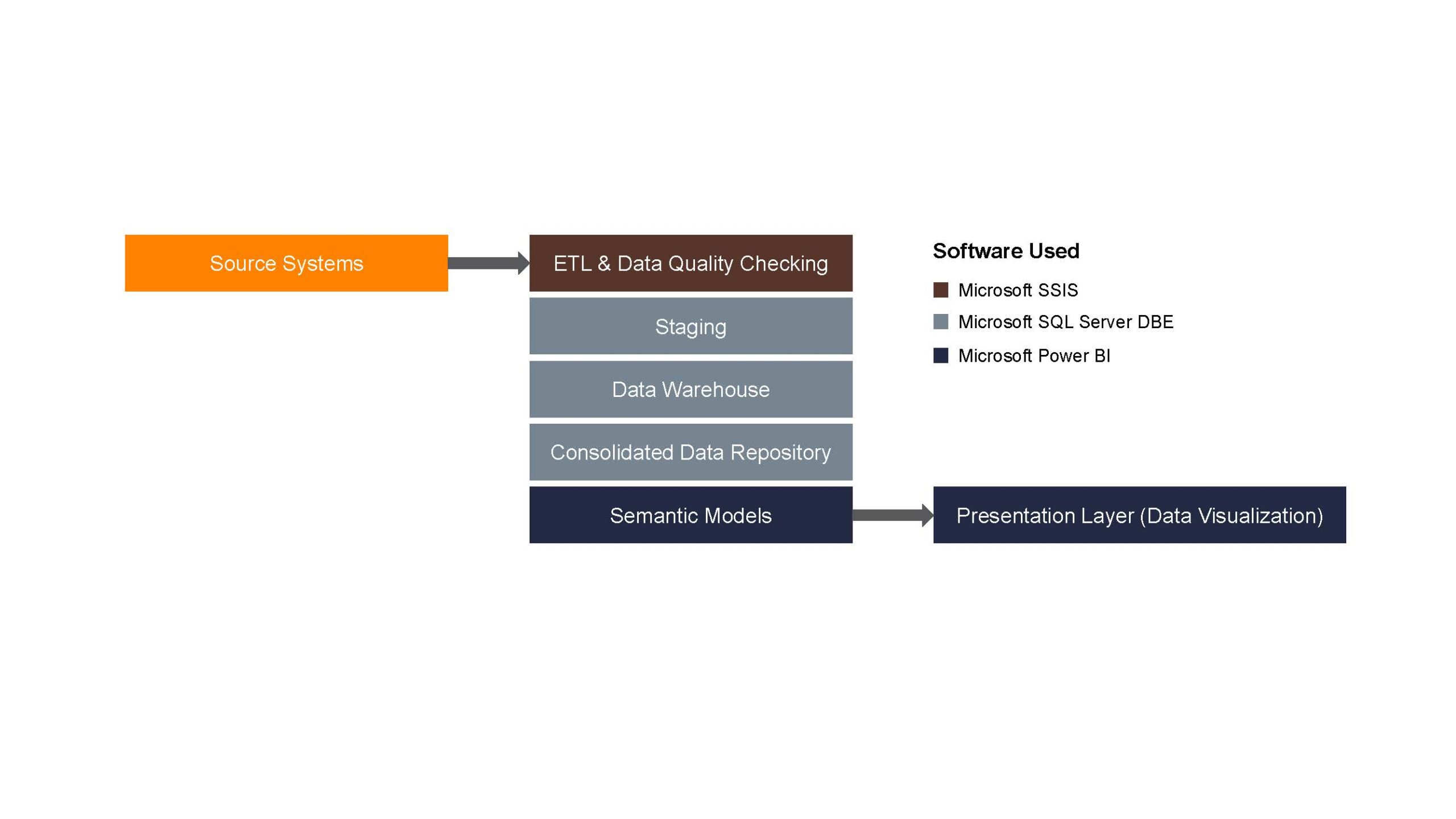Business Intelligence
The Business Intelligence (BI) team gathers, warehouses, models, and visualizes data from multiple information systems across all University of Tennessee campuses and system administration. As part of the Institutional Effectiveness (IE) team, BI supports data-informed decision making and provides data for institutional research, strategic planning, and assessment purposes.
If you work with data at UT and would like to participate in the UT Systemwide Business Intelligence group that meets quarterly, find the “UT Systemwide BI Workgroup” on Microsoft Teams, or reach out to the BI team at bi@tennessee.edu.
Services
The BI team brings data onto their SQL Servers from a variety of sources across the system. These data enter staging databases and are then transformed and loaded to data warehouse databases. From there, views are created in consolidated data repository (CDR) databases, which is from where data are modeled for reporting. Data are modeled in SQL Server Analysis Services and Power BI for use in reports and Power BI dashboards. Publicly available Power BI dashboards created and maintained by the BI team are available at data.tennessee.edu.
Access to the BI SQL Servers is granted on a case-by-case basis and is usually granted only to users who have access to the data in the source system (e.g., a user cannot access additional information from IRIS through our servers; only what they can see in IRIS itself). Users should first request access to information on databases on their own campuses, when possible. Security is managed by data owners in conjunction with the DTS Infrastructure team.
For more information, please contact us at bi@tennessee.edu.

After passing the quality check, data is stored in a staging environment, Data Warehouse, and Consolidated Data Repository, all powered by Microsoft SQL Database Engine.
A data dictionary for all sources and definitions is maintained independently for this data model.
Semantic models powered by Microsoft Power BI interpret information from the Consolidated Data Repository for a presentation layer. These take the form of data visualizations, including reports and dashboards generated with the Power BI reporting service.

You must be logged in to post a comment.